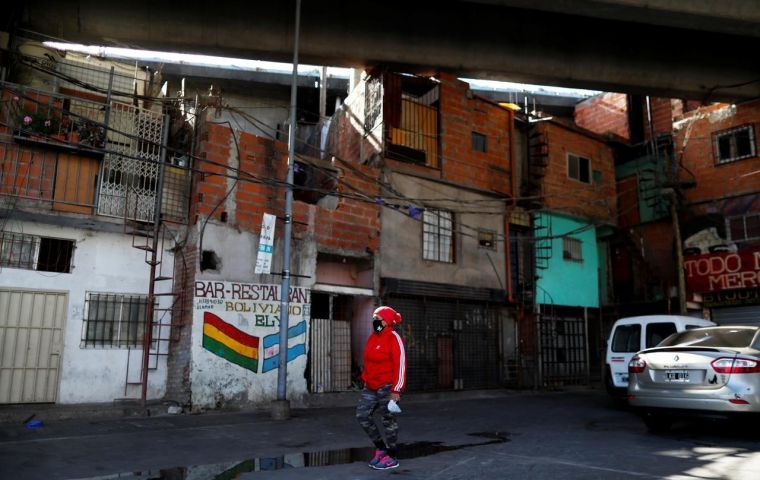MercoPress. South Atlantic News Agency
Official 2020 inflation in Argentina at 36,1%, but several points higher for the poor half of the country
 An average family of four in Argentina, without paying rent needs US$ 362 to keep above the poverty line; this compares with US$ 340 in November.
An average family of four in Argentina, without paying rent needs US$ 362 to keep above the poverty line; this compares with US$ 340 in November. Argentina registered inflation of 36,1% in 2020, with the declining rate during three quarters, picking up strongly in the last three months particularly basics such as food which is serious since almost half of the Argentine population are cataloged as poor or living below the poverty line.
In effect, according to the stats office Indec, the so called Total Basic Basket, (CBT), which marks the poverty line, climbed 4,7% during December, totaling 39,1% last year, above the official 36,1% and 4% for December.
Indec takes into account an average family of four, father, 35, mother, 31, a girl, 8 and a boy 6, who do not pay rent, and concludes they need 54,208 Argentine Pesos to make it through the month of December, and not falling below the poverty line. The sum is approximately US$ 362, which compares with 51,775 Pesos or US$ 340 in November.
For a single adult (aged between 30 and 60) the CBT climbed from 16,756 Pesos to 17,543 Pesos equivalent approximately to US$ 110 and US$ 115, November to December.
However the Basic Food Basket (CBA) which measures indigence in December climbed to 7,340 from 6,982 Pesos in November, approx US$ 48 and US$ 45, equivalent to a 5,1% increase totaling 45,5% in the twelve months. An average Argentine family needs 22,681 Pesos to be above the indigence line, US$ 149.
It should be underlined that the minimum vital salary in Argentina during last year was increased 22% to 20,558 Pesos or US$ 135. This means the percentage increase was lower than the CBA, (45%) or the CBT (39,1%).
In December, the official inflation was 4%, the highest monthly rate of the year and worst since November 2019. But for CBT and CBA the percentages were even higher 4,7% and 5,1%.
In the last month of the year, food and non-alcoholic beverages recorded price increases of 4.4%. Meat prices, meanwhile, climbed at a double-digit rate. In the twelve months Clothing and footwear soared 60%; Leisure and Culture, 48% and Food and Beverage, 42,1%
Inflation has been rampant in Argentina: in 2019, prices surged by 53.8%, and in 2020 the rate was kept artificially low by price and currency controls, with the country now entering its third straight year of recession, with almost half the population below the poverty line. It is hard to establish since stats in Argentina have been methodically tampered, but the prevailing opinion among economists is that the economy had remained stagnant since 2012.




Top Comments
Disclaimer & comment rules-

-

Read all commentsAfter the recent earthquake in Argentina, I had a long cordial phone conversation with my good skiing friend in San Juan who informed me that his family was unaffected — but told me that currently the economic situation was a disasaster.
Jan 30th, 2021 - 12:46 pm 0Although he's sheltered wealth abroad — he said the current statistics are smoke and mirrors to hide the actual high inflation and untenable unemployment.
You can already see the price controls — which will cause the situation only to worsen and labor unrest is rising.
Sadly — Argentina is going to face an uncertain future.
It is sad indeed. Argantina was once the jewel of Latin America, comparable to most European nations. The long and steady decline into third world status will not be reversed until Argentinos themselves learn to discern the real causes for their malaise and it needs to start by stopping to point their finger away from themselves. Argentina has the means to halt and reverse this decline, but some honest self-reflection is a pre-condition.
Jan 31st, 2021 - 10:35 am 0Commenting for this story is now closed.
If you have a Facebook account, become a fan and comment on our Facebook Page!